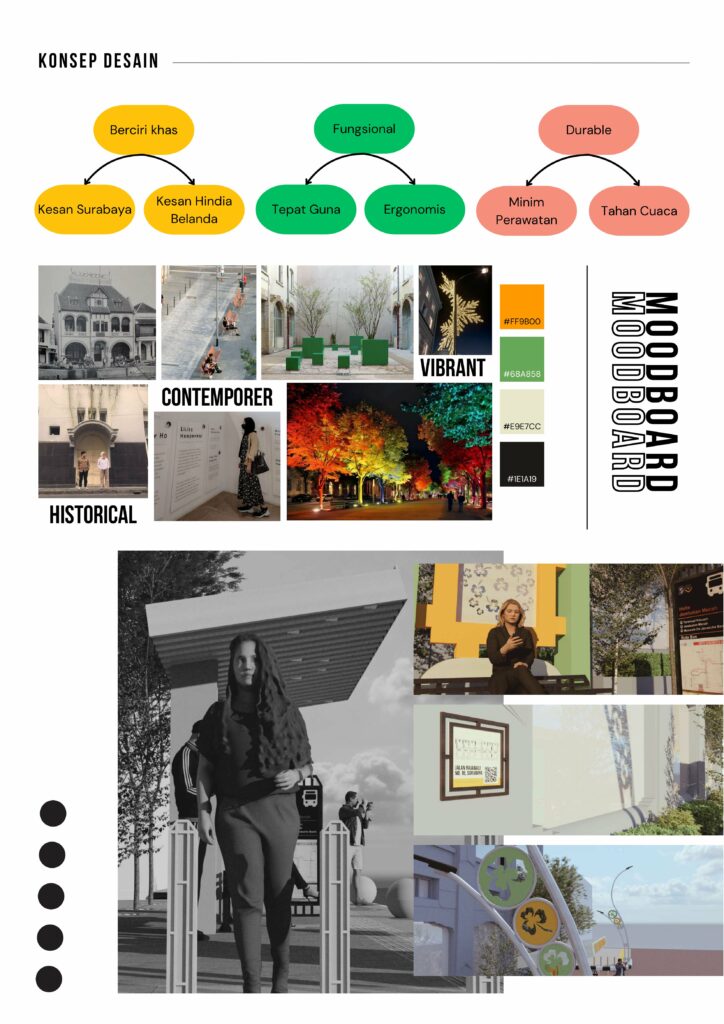The city of Surabaya has excellent potential to become a “heritage” (historical) tourism destination. Of the 3 places in the old town area, Jalan Rajawali was chosen because of the road’s history as a trading center during the Dutch East Indies era and as a silent witness to the Battle of Surabaya during the early days of the Republic of Indonesia’s independence. However, this tourism potential is neglected due to the lack of historical value depicted along the street and not well-supported by street furniture to support tourist activities. This research aims to develop street furniture that supports tourist activities as well as having the historical of an old city of Surabaya. The method that used is the double diamond method. Starting from the discover stage by conducting literature studies, field surveys, and semi-structured in-depth interviews and which are then summarized into persona. Followed by define, develop, deliver stages to determine the needs and design concepts. The design concept is based on the colonial building style (Dutch East Indies) of the Verzekerings Maatschappij Building or Lion Building. The building shapes taken are in the form of windows (dower windows), balcony pillar shapes, and arch door shapes. From this formation, 5 alternative design series were created. The five designs were selected and the result was a design for 1 series of street furniture in the form of a bus stop with a charging station, benches, thematic trash cans, thematic bollards, thematic street lights, cultural heritage building plaques, and information boards on the history of the Surabaya War inspired by the Lion Building with inspired window shapes (dower window).


